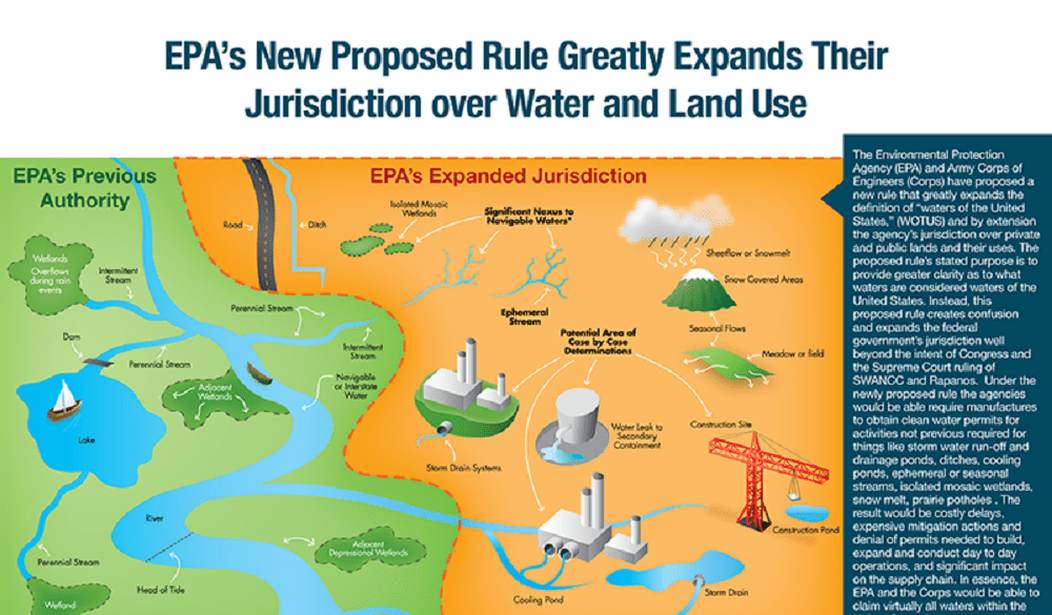This history of the EPA and the Army Corps of Engineers is best viewed as the history of bands of lawless and unaccountable self-important do-gooders who have used the very general guidelines of the Clean Water Act to strip landowners, both private and corporate, of the ability to manage their lands. At times, these two agencies have decided that any body of water, no matter how ephemeral and removed from a permanent body of water was subject to regulation. Lest you think this is hyperbole, consider:
Mike and Chantell Sackett bought their land near a scenic lake for $25,000, but when they decided to build a property there in 2007, the EPA ordered a halt, saying the Clean Water Act requires that wetlands not be disturbed without a permit.
They’ve been fighting for the right to challenge the decision in court for several years, and facing millions of dollars in fines over the land.
The couple complained there was no reasonable way to challenge the order, and noted they don’t know why the EPA concluded there are wetlands on their lot, which is surrounded by a residential neighborhood with sewer lines and homes.
The EPA asserts jurisdiction basically over any temporary or permanent stream or wetland that eventually connects with a navigable waterway. In the 2006 case of Rapanos versus United States, Rapanos was fined and sentenced to jail for filling in intermittent wetlands over 20 miles from the nearest navigable waterway.
Since that time confusion has reigned with a divided Supreme Court producing three different decisions, one of which, naturally authored by Anthony Kennedy, is mostly incoherent and therefore the logical one for lower courts to apply.
Why farmers think #EPA goes too far. Clean Water Act protects waters from discharges that may harm water quality. https://t.co/GP1wr3Sddj
— Mac Pippin (@MacPippin) February 28, 2017
Today President Trump will order the EPA to rewrite its guidelines and ask them to use the reasoning used by Antonin Scalia in Rapanos as their basis.
President Donald Trump is poised to sign an executive order (EO) that will direct EPA to rewrite the contested Obama-era Clean Water Act (CWA) jurisdiction rule using the late Supreme Court Justice Antonin Scalia’s narrower test for determining jurisdiction rather than the broader test from Justice Anthony Kennedy that the Obama EPA relied on.
Excerpts from a draft version of the order, first obtained by Axios, would direct EPA and the Army Corps of Engineers to begin the process of reconsidering their 2015 joint rule. The agencies “shall consider interpreting the term ‘navigable waters,’ as defined in [the CWA], in a manner consistent with the opinion of Justice Antonin Scalia in Rapanos v. United States,” the draft order says.
This is the full text of the order:
https://twitter.com/jonathanvswan/status/836529019893997568
What this does is freeze several court cases challenging the Waters of the United States rule. The EPA must promulgate a new rule and once that rule is in effect it will undoubtedly be attacked by environmental groups. The obvious solution here is for Congress to step in and revise the Clean Water Act (and the Clean Air Act) in such a way that the EPA has to stop abusing American citizens and arrogating the legislative and executive powers of the states to itself.













Join the conversation as a VIP Member